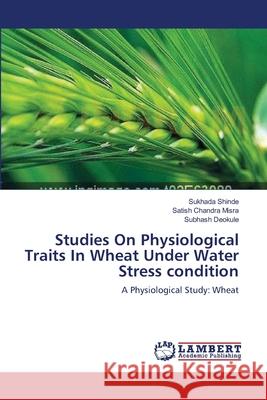Studies On Physiological Traits In Wheat Under Water Stress condition » książka
Studies On Physiological Traits In Wheat Under Water Stress condition
ISBN-13: 9783659134494 / Angielski / Miękka / 2012 / 156 str.
Several morpho physiological traits are traditionally used as screening criteria for drought tolerance such as relative water content (RWC), stomatal index, water use efficiency (WUE) etc. Crop WUE can be improved by optimizing crop transpiration. Several workers have proposed carbon isotope discrimination (CID), ash content and canopy temperature depression (CTD) as selection criteria for transpiration efficiency (TE), which may serve as the surrogate measures for improvement in grain yield.To identify suitable physiological traits useful in wheat breeding under water stress environment is the major thrust area of present investigation. For this, Durum and aestivum genotypes were selected from the breeding material of ARI, Pune (MS, India).Experimental trials on Triticum durum were conducted under three different water regimes viz. residual soil moisture stress (RSMS), post anthesis water stress (PAWS) as limited irrigation (LI) and well watered (WW) conditions.Data were collected for agronomical and physiological characters. Soil water balance model BUDGET (Raes et.al. 2006) has been used for deriving WUE using meteorological, rainfall and irrigation data of (2004-05)and(2006)











